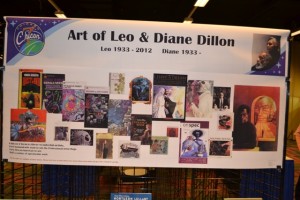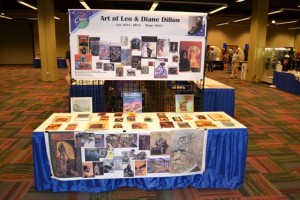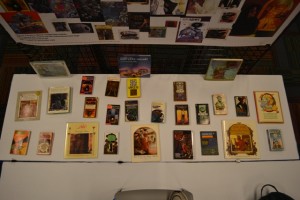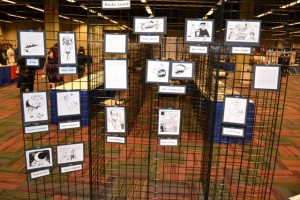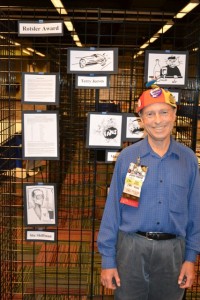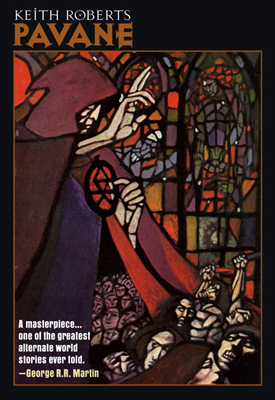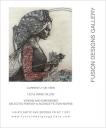By John Hertz: In May when Leo Dillon died I felt that Chicon VII (officially “Chicon 7” for the Mercury 7 astronauts) really ought to have an exhibit honoring the Dillons’ work, two of our finest illustrators over fifty years. I found nobody else was yet planning one. I got valuable advice from Vincent Di Fate and Jane Frank.
Mark Olson had the swell idea of displaying books the Dillons had done. Alice Massoglia rounded up two dozen decent-quality reading copies – not collectors’ copies, I wanted to let people pick them up and look through them. A good handful of Harlan Ellison books, issues of Fantasy & Science Fiction with Dillon covers, the Byron Preiss collection, 20,000 Leagues Under the Sea with their cover and interiors, Ashanti to Zulu which won one of their Caldecotts (and reminded me of my Nigerian drum teacher), Pish, Posh, Said Hieronymous Bosch which they did with their son Lee, the hundredth-anniversary Wizard of Oz, some Lafferty, The Snow Queen, and a host of others reached me in Los Angeles, were sent on to Chicago, and arrived safely.
Elizabeth Klein-Lebbink resplendently with her electronic powers made three banners, one for the top with “Art of Leo and Diane Dillon” and a color photo, one mounted under that and one mounted on the front of the display table with images of every shape and size, some we had physical examples of and James Baldwin, Martin Luther King, Shakespeare, Mark Twain.
Richard Lynch took photos so you can see how it looked. This involved his climbing onto a chair on top of a table muttering “This is stupid, this is stupid” while Nicki across the Exhibit Hall wondered.
Richard also helped me put up the Rotsler Award exhibit and photographed that for you. My guide through various spacetime problems with it was Randy Smith, as ever a big help. All three judges, Claire Brialey, Mike Glyer, and I, were at the con, but no more than two of us ever managed to be in the same place. If we all had, that might have popped Dave McCarty into the 14th Chorp Dimension.
Which reminds me, Dave, what happened to the Jay’s potato chips?

